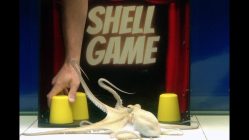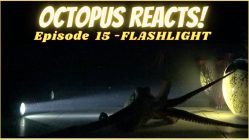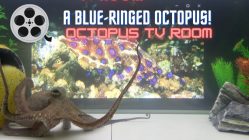When you see static pictures of the blue-ringed octopus you immediately notice the beauty of the pattern of the blue rings along its arms and head. However, static imagery does not allow you to properly appreciate how these blue rings can fluctuate in intensity and luminosity.
In this short video clip shot in the waters off Indonesia, you will see a medium sized blue-ringed octopus traveling across the ocean floor. It is in the process of looking for prey.
As it searches for something tasty to eat, you will see the octopus use different means of locomotion. You will see how it uses its arms as legs and literally walks on the ocean floor. You will also see it gently glide through the water as it funnels water to create a gentle stream for propulsion.
As this blue ring octopus moves about you will see how there are moments when the blue rings appear to be somewhat muted — some would say pale. Then there will be other moments when they suddenly become very bright, almost as if they were powered — like LED lights.
The blue-ringed octopus is able to perform this action due to the structural makeup of the blue rings at the cellular level. They are composed of tissue which emulates the function of a reflector. In other words, when a blue-ringed octopus wants to highlight its blue rings to intimidate potential predators, the blue rings become very reflective. This, combined with small muscle movements along its skin, create the flashing effect that you see in the video.
The most exciting part of the video comes when you see the octopus suddenly dash off at high speed.
Spoiler alert: The octopus dashed off because it had spotted a tasty crustacean. it immediately captured it with its arms and then did what any other octopus would do — eat it.
If you ever wondered how an octopus eats, this video will provide you with that answer.











